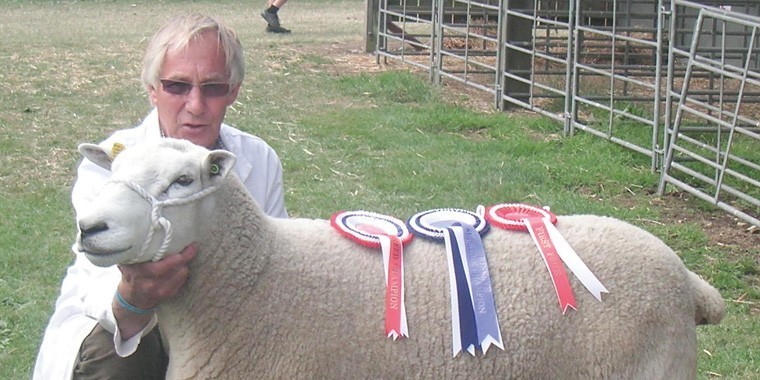Yesterday I was at the South of England fatstock show – an enjoyable day out, but also a day that started me thinking about Christmas.
I know that it is only the middle of November, but fatstock shows are, to me, always one of the heralds of Christmas and the end of another year. Although we have not yet reached the end of the year, it is quite obvious that 2016 will be a year that people will remember well into the future, a year that will be remembered for various reasons. Close to home, our referendum decision for the UK to leave the European Union and across the Atlantic the election of Donald Trump as president elect of the United States, are decisions that will both have a significant impact on the UK and our agriculture. Whether that impact will be beneficial or detrimental is, as yet, unclear and will take a number of years before it is fully felt, but they will definitely have a considerable impact. UK agriculture and the sheep sector are entering a period of substantial uncertainty: the next 10 to 15 years in agriculture are going to be interesting times, not always easy, but certainly interesting and a time when we will desperately need innovative, committed, hard working and open minded, new, young entrants coming into the sector if we are going to survive as an important world player.
It is worth remembering that the UK, behind Australia and New Zealand, is the third largest lamb exporter in the world, something that we should all be proud of, particularly the fact that we produce some of the finest lamb in the world. Those of us currently in the sheep sector owe it to the industry to encourage and support young, new entrants and to inspire them to dare to be different, even if that involves them questioning and challenging systems, techniques and practices that we currently employ and hold dear.
We all like to think that we have got things about right, but socially and economically the production and marketing environment that we operate in will change and those in the industry will need to change. It was Malcolm Muggeridge (some will remember him) who said: “Never forget that only dead fish swim with the stream.”
On a personal level, Christmas and the new year is also a good time to reflect on the outgoing year. 2016 has certainly been an interesting year and one that at times has presented a few challenges for sheep producers in the South East. We started the year with plenty of grass arising from an exceptionally mild winter then ran into a period when grass supplies were tight just when we needed them to stimulate milk production in ewes with young lambs at foot. We then had plenty of grass, too much for some, in late spring and summer and then tight grass supplies at tupping, with no autumn flush of grass just when the ewes would really have benefitted.
My new pup had been with us for about eight weeks before she encountered her first really wet, rainy morning. Not that it bothered her, nothing seems to, but it was an illustration as to how dry the autumn has been. For me, lambing time 2016 was one of the best I have ever had, 18 days from start to finish in reasonably good weather with very few lambing problems and minimal assistance, providing plenty of good sized, strong and lively lambs on the ground, resulting in a lambing percentage falling just two points short of my 200% target, with very few triplets, only three percent mortality and an average eight week weight of 22.8 kilograms.
Slow grass growth did however necessitate the feeding of a little more concentrates than anticipated post lambing, simply to get the ewes milking adequately. The ewes went to the tups in good condition this autumn and everything was marked within 16 days, with no ewes returning in the second cycle so I am hoping for an equally tight lambing in the spring of 2017.
Sheep and lamb prices had a disappointing start to 2016 but firmed up going into the spring in spite of the best efforts of some of our retailers to peg back prices with the strategic purchase of New Zealand lambs long after adequate supplies of home produced new season’s lamb came onto the market. The referendum decision and resulting drop in the value of stirling stimulated exports just at the right time to boost domestic prices, which then put a bit of confidence back into the sector.
Enhanced confidence certainly helped to encourage a lively trade throughout the autumn breeding stock sales, with both ewe lambs and ewe tegs selling well. Good rams also sold well, but as usual when female prices are good, producers do seem to be a little more cautious when buying rams, something that I find counter intuitive, which did result in some producers being left with some good quality rams.
I wish everyone all the very best for Christmas and the new year. Let’s hope that 2017 does not produce any unpleasant surprises and that Brexit goes well, for us and everyone else.




